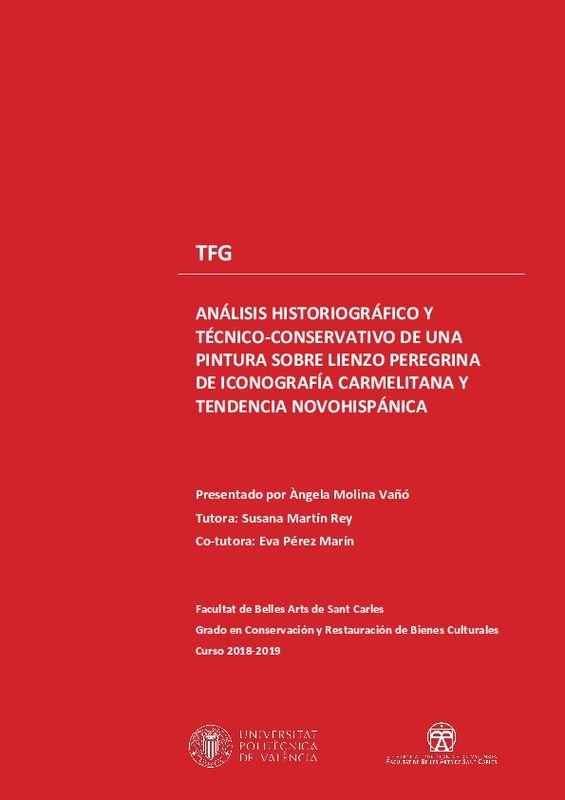JavaScript is disabled for your browser. Some features of this site may not work without it.
Buscar en RiuNet
Listar
Mi cuenta
Estadísticas
Ayuda RiuNet
Admin. UPV
Análisis historiográfico y técnico-conservativo de una pintura sobre lienzo peregrina de iconografía carmelitana y tendencia novohispánica
Mostrar el registro completo del ítem
Molina Vañó, Á. (2019). Análisis historiográfico y técnico-conservativo de una pintura sobre lienzo peregrina de iconografía carmelitana y tendencia novohispánica. http://hdl.handle.net/10251/126520
Por favor, use este identificador para citar o enlazar este ítem: http://hdl.handle.net/10251/126520
Ficheros en el ítem
Metadatos del ítem
| Título: | Análisis historiográfico y técnico-conservativo de una pintura sobre lienzo peregrina de iconografía carmelitana y tendencia novohispánica | |||
| Autor: | Molina Vañó, Ángela | |||
| Director(es): | ||||
| Entidad UPV: |
|
|||
| Fecha acto/lectura: |
|
|||
| Resumen: |
[EN] he present end-of-degree work focuses on the historical, technical and analytical study of a painting on canvas of devotional type, where the image of Our Lady of Carmen is represented, in order to determine whether ...[+]
[ES] El presente trabajo de fin de grado se centra en el estudio histórico, técnico y analítico de una pintura sobre lienzo de tipo devocional, donde se representa la imagen de Nuestra Señora del Carmen, con el fin de poder ...[+]
|
|||
| Palabras clave: |
|
|||
| Derechos de uso: | Reserva de todos los derechos | |||
| Editorial: |
|
|||
| Titulación: |
|
|||
| Tipo: |
|
recommendations
Este ítem aparece en la(s) siguiente(s) colección(ones)
-
BBAA - Trabajos académicos [5086]
Facultad de Bellas Artes







